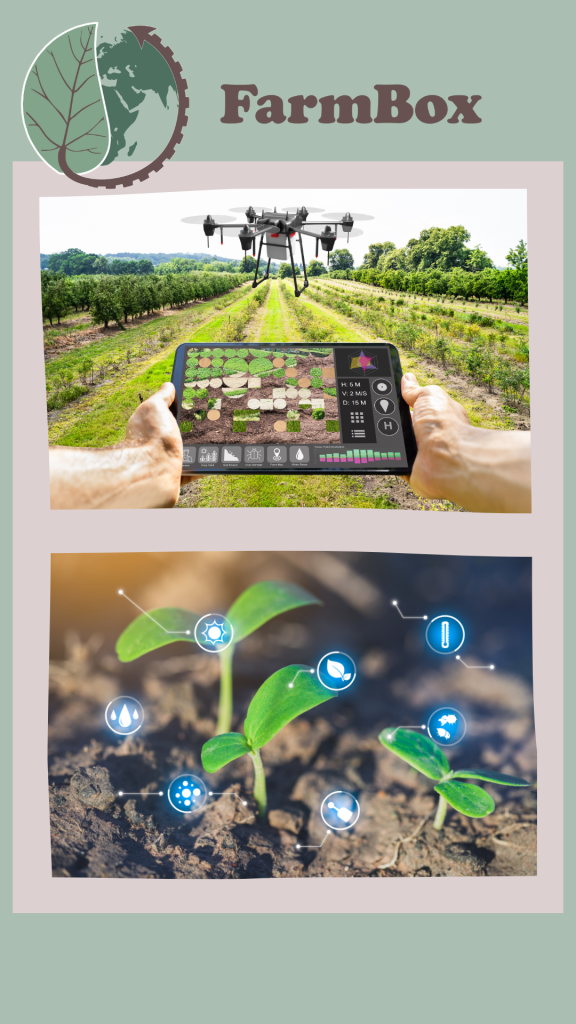
The use of technology in all facets of farming is becoming a more popular area for investment. According to Jed Lynch, Head of Americas, Sustainable & Impact Investment Banking at Barclays, “agriculture has traditionally been considered as a mature industry, but we are now witnessing substantial technology-led innovation across the sector.” As a result, there has been a noteworthy rise in venture investment, high-growth firms, and public market interest in this sector.
According to the World Bank, the worldwide agriculture market is worth close to $8 trillion. As a result, the use of cutting-edge technology in this industry might have significant effects on the planet, people, and investors.
Regarding the first point – impact on the planet – Climate Change is affecting the efficiency and overall structure of agriculture since crop and livestock production are very sensitive to extreme weather events such as droughts, heatwaves and floods. Moreover, the more traditional practices of this economic activity have proven to be not necessarily eco-friendly since they usually involve more water and energy consumption, and the use of chemical elements. Thus, the correct use of AI technology could help reduce the Climate Change effect with the appliance of, for example, sensors that measure humidity, temperature, etc. that would help the agricultural practice to be more efficient and, consequently, environmentally friendlier.
Regarding the impact on people involved in the process, and specifically the farmers involved in the modernization of their practices, it has to be mentioned that an initial investment in technology would at the long run reduce the economic expenses. As the practice would become more efficient, lesser waste on product, energy and time would imply a direct benefit for the farmer. Even if the benefit cannot be appreciated in the beginning, it is also true that more governments are rewarding these kinds of practices through means of grants. Moreover, fines are also applied to those places that do not respect the environment. Thus, it would imply that the farmers would not only reach economic benefits but also, increase the engagement of their consumers as they would brand themselves as protectors of the environment.
Lastly, there are impacts in the case of public investors such as governments, that are interested in the current trend of greener practices. Public organisations are requesting organisations such as companies, to become as environmentally friendly as possible. To this regard, there are many grants available in order to help farmers and organisations involved in the labour chain of the agricultural sector to become as “Green” as possible. Some examples of EU grants are the European Agricultural Fund for Rural Development (EAFRD) or the European Regional Development Fund (ERDF) that seek to help agriculture trough innovation. Campaigns such as “zero waste” or laws in reference to recycling are just the prelude to this reality, and farmers must adapt with the help of technology.
For example, in the case of the food industry, the application of new technologies has proven to be beneficial. Even if they have brought profound changes to the structure of the sector, examples such as the better performance of seed applied, especially in indoor farming, have shown great economic benefits, such as reduction on the consumption of water and energy. Furthermore, as technology advances and extends through the sector, they have become cheaper.
“Enabling technologies, such as smart sensors, predictive analytics, automation and the technology of CRISPR gene editing, are becoming cheaper and better, and most importantly, are affecting not just one area, but virtually every stage of crop production,” says Lynch.
In conclusion, the inclusion of AI driven technologies is becoming a must for the traditional sector that is in need to adapt its practices to the norms and expectations of today’s society, but also for the wellbeing of our planet.
References
AgFunder “2021 Set to Break New Record for AgriFoodTech Investment” https://agfunder.com/research/2021-AgFunder-agrifoodtech-investment-report
AgTech’s growth opportunities ripen | Barclays CIB. (2022). Retrieved 5 July 2022, from https://www.cib.barclays/our-insights/3-point-perspective/agtechs-growth-opportunities-ripen.html?cid=paidsearch-textads_google_google_themes_agtech_uk-we_banking_agtech_nonbrand_327438052238&gclid=CjwKCAjwwo-WBhAMEiwAV4dybdkL2gMzwPW3KUBzfzP5l8_iTMKoXdHF2wS2aFlN3pbhKBBk9y9dCBoCxuAQAvD_BwE&gclsrc=aw.ds
Eip-Agri. ‘’EU funding opportunities related to innovation in agriculture, food and forestry Submitting your innovative project: what, how and where. ‘’ https://ec.europa.eu/eip/agriculture/sites/default/files/eip_agri_funding_for_web.pdf
World Bank “Do the Costs of the Global Food System Outweigh Its Monetary Value?”
European Environment Agency. ‘’ Climate change threatens future of farming in Europe’’ (2020). https://www.eea.europa.eu/highlights/climate-change-threatens-future-off
Stony Brook University. ‘’Sustainable vs. conventional agriculture’’. https://you.stonybrook.edu/environment/sustainable-vs-conventional-agriculture/#:~:text=Sustainable%20agriculture%20consumes%20less%20water,the%20integrity%20of%20the%20environment
World Bank “Do the Costs of the Global Food System Outweigh Its Monetary Value?” https://blogs.worldbank.org/voices/do-costs-global-food-system-outweigh-its-monetary-value


No responses yet